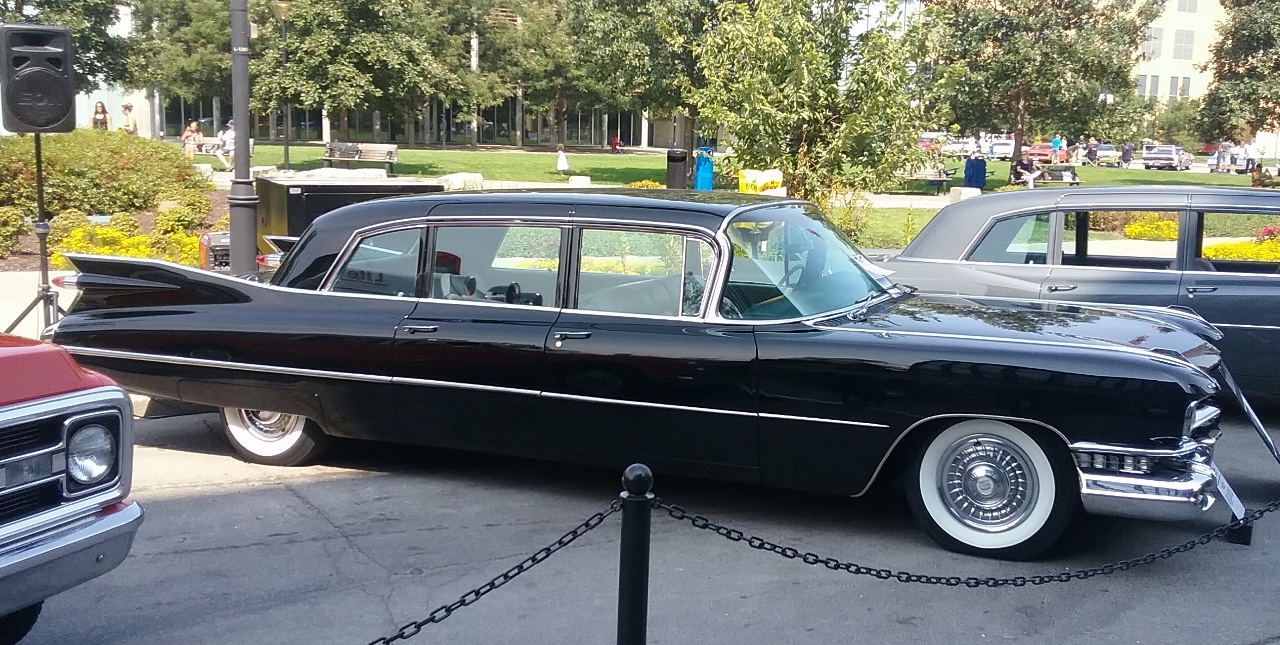
A while back on the 1978 Caprice Classic post, one of our commenters asked about deciphering the various General Motors platforms. My friend Carmine explained it all in a subsequent comment. There were a few even I hadn’t heard of (the Corvair was a Z-body?!). At the time, I intended to do a little post on it, and add pictures of the appropriate cars under his text. Of course, as often happens with me, it got put on the back burner, then was conveniently forgotten.
But today I remembered! So here it is, the Compleat Guide To GM Platforms. Enjoy. And thanks to Carmine, for running down all the different models.

1977 Buick Century Custom
A- Originated for the midsize RWD cars that replaced the compacts in 1964, Tempest, LeMans, Cutlass 442, GTO, Special, Skylark switched to the FWD A-body cars in 1982, Celebrity, Century, 6000, Ciera, retired in 1996.
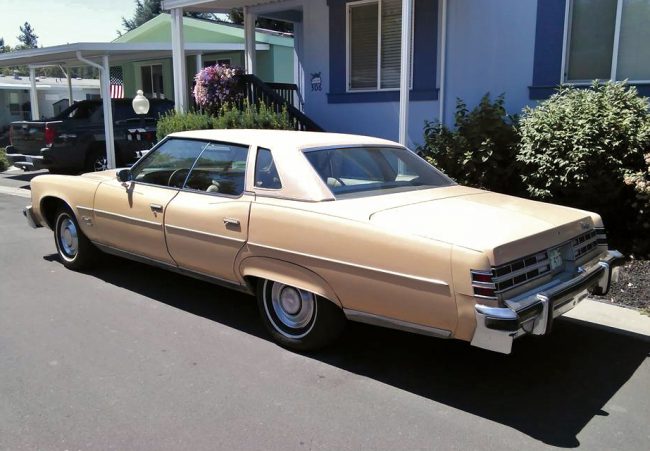
1976 Pontiac Bonneville Brougham
B-The shorter wheelbase “big” standard car-originated around the late 40’s or so,used until 1996-Caprice, Impala, Bonneville, Delta, LeSabre.
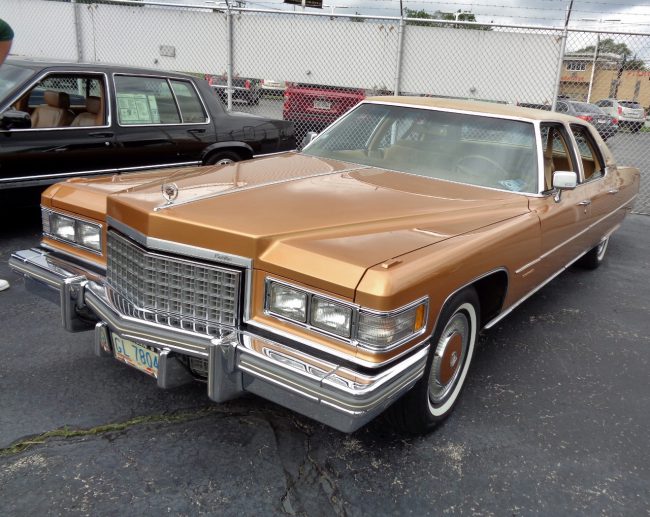
1976 Cadillac Fleetwood Brougham d’Elegance
C-The long wheelbase senior cars, Electra, 98, DeVille, Fleetwood Brougham.
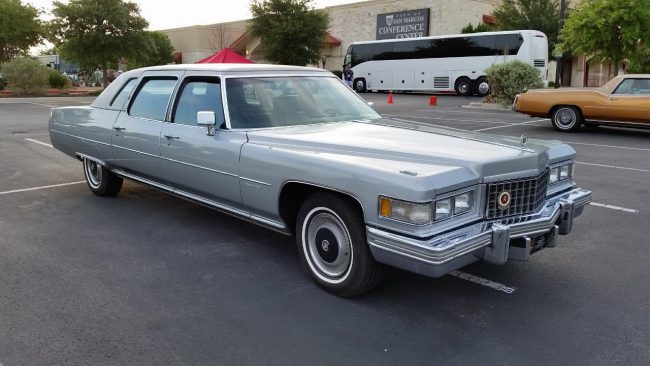
1976 Fleetwood Series Seventy-Five. Photo: Jayson Coombes
D-Sometimes used for the big Fleetwood Series Seventy-Five sedan and limousines.
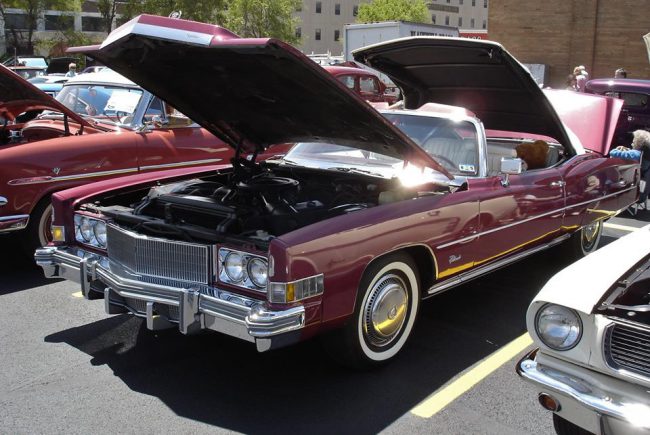
1974 Cadillac Eldorado convertible
E- Always used for GM’s large personal luxury coupes(Eldorado,Riviera,Toronado) from 1966 through at least 1993, longer on the Eldorado maybe.
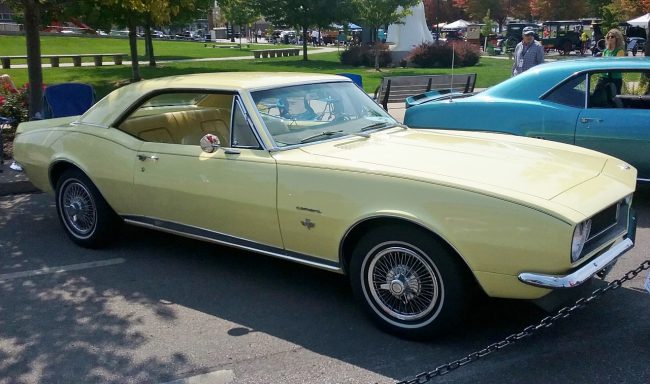
1967 Chevrolet Camaro
F-Camaro/Firebird.
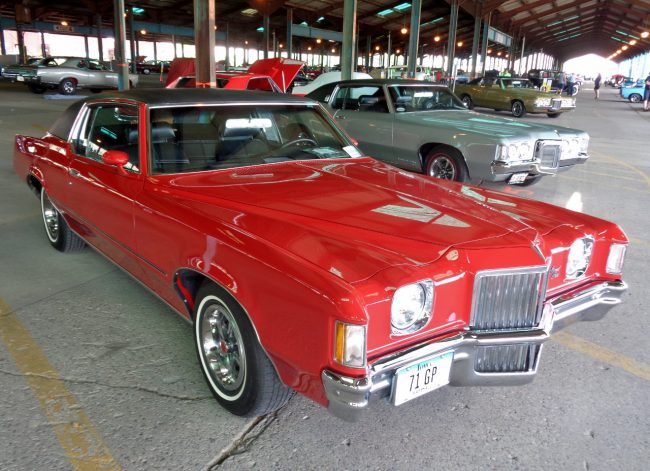
1971 Pontiac Grand Prix
G-Originally used for the stretched A-body Grand Prix and Monte Carlo (1969-72), later used on the RWD A body cars from 1982-1987, when the the FWD A’s came out in 1982, later used again on the G-body Oldsmobile Aurora and Buick Riviera in 1995.
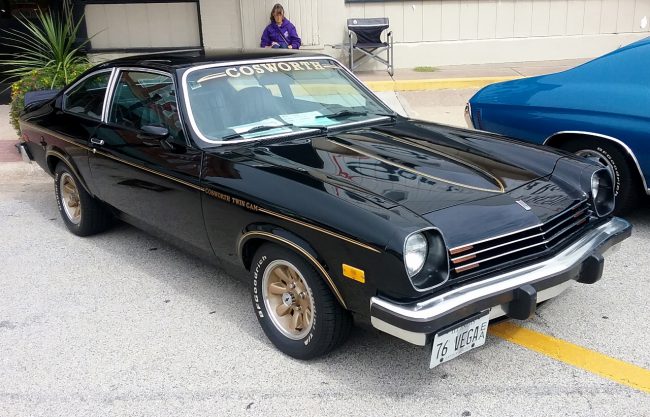
1976 Chevrolet Cosworth Vega
H-Vega/Monza/Astre/Sunbird/Starfire/Skyhawk.
I-Never used as far as I know.
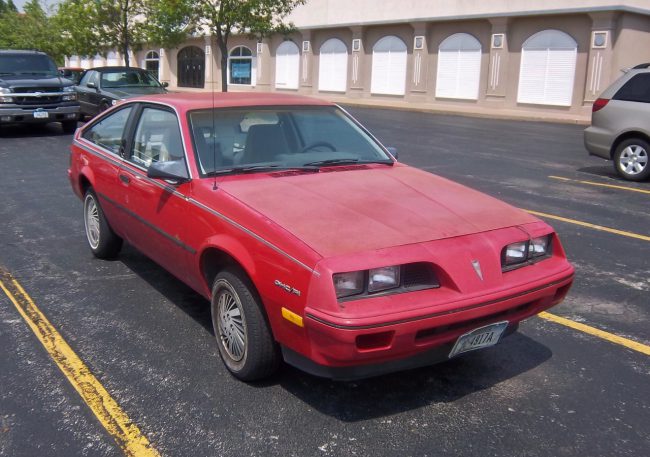
1984 Pontiac 2000 Sunbird
J-FWD compacts road roach made from 1982-2002 -replaced the H body, Cavalier, Sunbird, J2000, Firenza, Skyhawk.
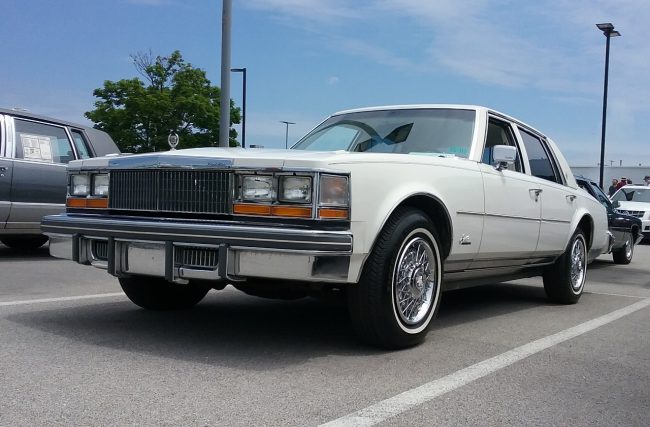
1978 Cadillac Seville
K-Seville, used on the RWD 76-79 cars and the FWD 1980-85 and on through 1997.
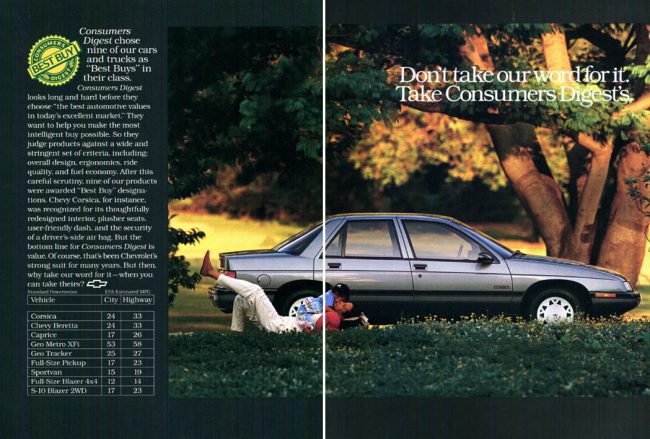
1991 Chevrolet Corsica
L-Chevrolet Beretta and Corsica only.
M-Never used as far as I know.
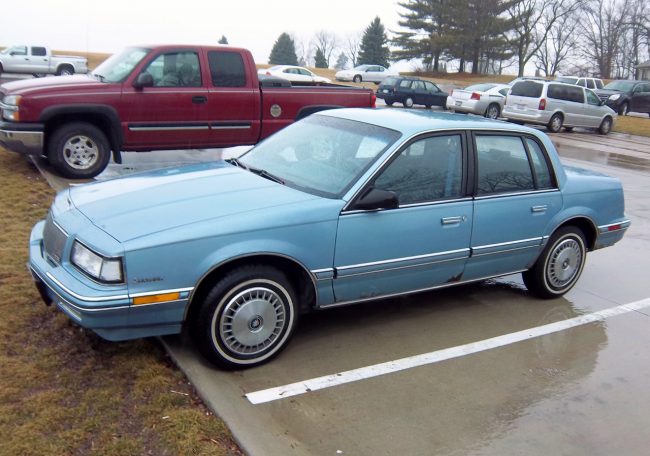
1991 Buick Skylark
N-FWD “intermediate” compacts made from 1985-2004-Calais, Grand Am, Skylark, Sommerset, etc,-this was replaced by the first Epsilon cars.
O-Never used.
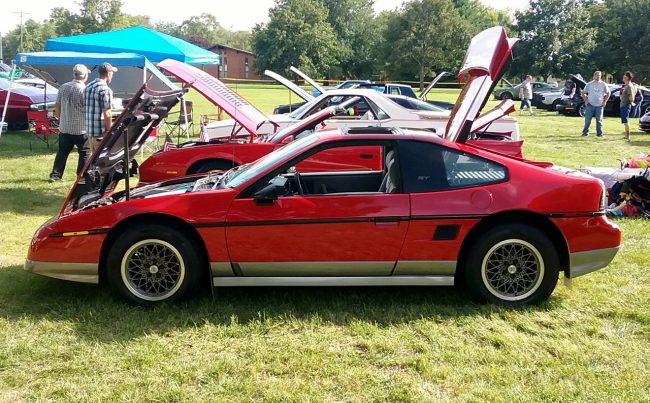
1988 Pontiac Fiero GT
P-Fiero!
Q-R-Never used.
S-Not used.
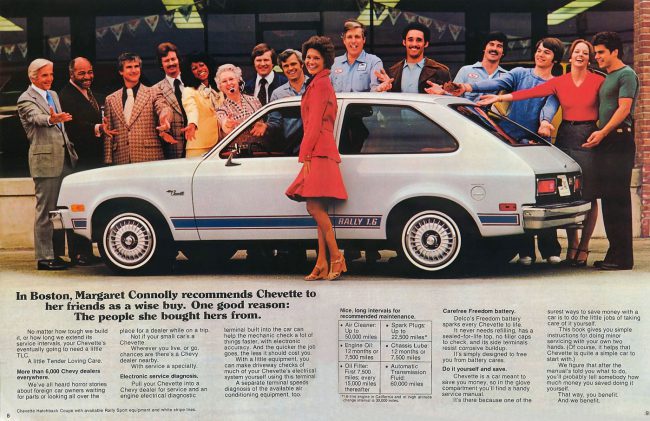
1977 Chevrolet Chevette
T-GM’s “world car” compact, the Chevette/T-1000/Acadian-don’t know if this was a T elsewhere under Opel or Holden etc.

1995 Pontiac Trans Sport
U-The plastic spaceframe “dustbuster” vans made from 1990-1996. Lumina APV, Silhouette, Trans Sport.
V-Not used.
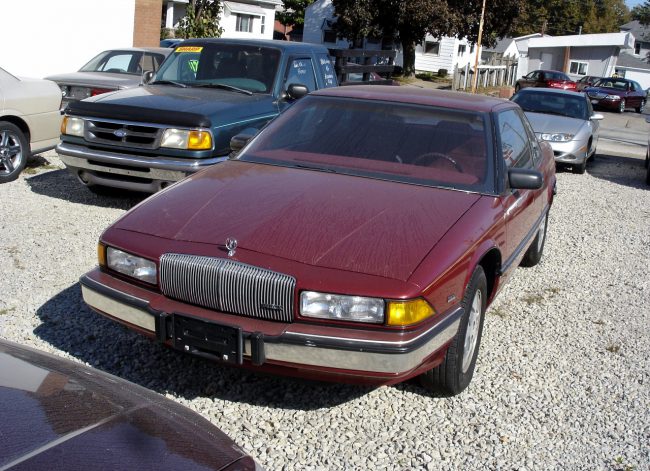
1988 Buick Regal
W-FWD A/G body replacements, introduced in 1988-Cutlass, Grand Prix, Lumina, Regal-retired a few years ago when the last W-body Impala was made.
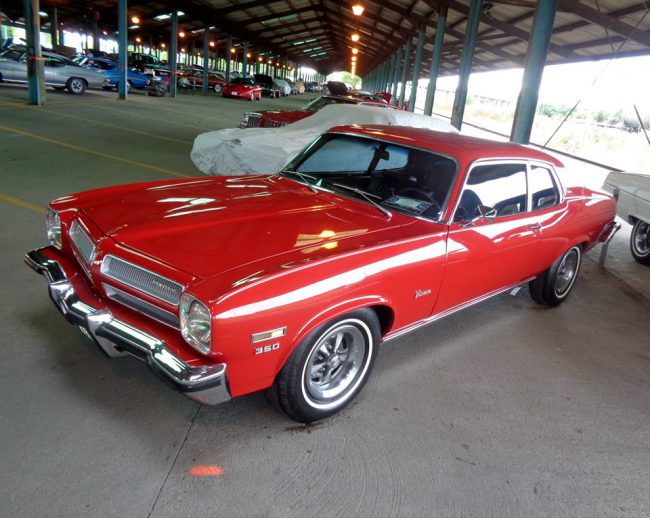
1973 Pontiac Ventura
X-Originally used for the RWD compact cars made through 1979, used again on the FWD Citation, Phoenix, Omega, Skylark, through 1985.

1962 Pontiac Tempest
Y-Originally used on the front engine/RWD GM compacts from 1961-1963, then used again on the Corvette from 1984 and up.
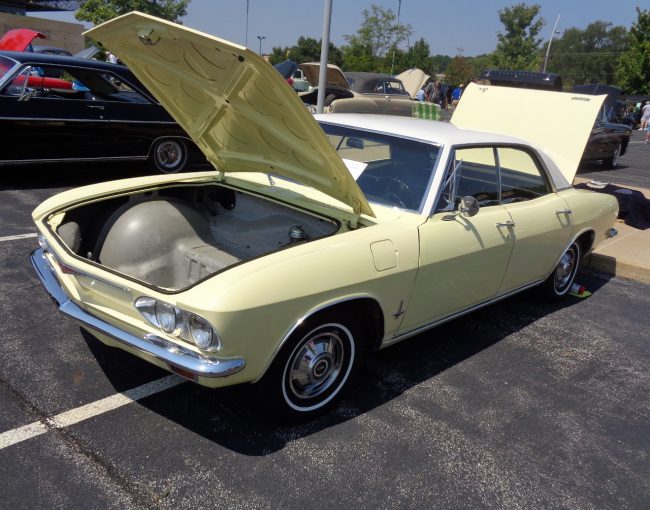
1965 Chevrolet Corvair
Z-Used on the Corvair from 1960-1969 and then on the Saturn S-series cars from 1990 and up.







27 Comments
Seeing that ever worsening parade of mediocrity over time clearly illustrates how GM went from a near monopoly in the 60s to merely one of the players in today’s market. Notwithstanding all their internal metrics/goalposts, the designs just got worse and worse and continuously missed the market.
A simple example of their laziness was the fact that the rental cars I used during business travel in the 90s had the same ignition lockset that my dad’s ’68 Cutlass used. Still with different ignition and trunk keys, long after others had switched to a single key. Of course the covered up safety issue that arose out of that ignition lockset moves the needle from lazy to negligent. A crying shame and so far removed from “what’s good for America is good for GM, and vice versa”.
Ah yes, if we could have only copied Europe and Japan and their lovely locksets, than all the import buyers would put their politics aside and rushed to the GM dealers.
Oh please John, easy on the snark. I didn’t identify the lockset issue as the reason GM went down the tubes, but only brought it up to illustrate how they couldn’t even get the simple stuff right; nickel and diming every decision resulting in billions of dollars of lost sales and increased liabilities.
Right. I bought Acura’s in the ’90s because of my (then active duty military) politics. The Beretta was TOTALLY competitive with my Integra if only I weren’t such a libtard. Or maybe …
Well you can describe your politics better than me. As far as competitiveness, my 1995 Beretta was a great car. I admit I gave no consideration whatever to the Integra. Looking at my old price guide, I can see why. Mine cost $13495 before the thousand dollar rebate and additional dealer discounting. Your basic Auto Integra was up at $16,630 before the dealer had a chance to gouge me for extra on the dealer installed A/C or I noticed that it lacked the Beretta’s ABS. I would have known that I couldn’t have gone that high on price and that the back seat was a little small. I would have wondered why even with 20 cubic inches less it got lower mileage city and highway, but would have put that down to crazy short gearing to hide that it had no torque. You are right though, if I had driven it, I am sure I would have loved those lovely locksets.
I know which one was the better car by which ones I still seen daily driven. I haven’t seen a Beretta outside of a junk yard in years, and they sold a hell of a lot more of them than Integras.
You can’t expect ricers to go for Berettas, which makes my point not yours. Are you really going to seriously argue that those tuned to within an inch of their lives Civic engines are more durable than the pushrod GM 2.2 or the 60 degree V6. Not in Lemons. Or that the fully galvanized Beretta was less rust resistant than a cheap Honda. Get serious.
Dude. Maybe you think you have some contrarian wisdom that most don’t possess in seeing gold in these crapcans. But sometimes the majority is right. Just because someone eats a turd and declares it delicious doesn’t mean most of us are better off desiring filet mignon. These cars are so shit that the manufacturer wants you to forget they existed. That’s why despite decades of Accords, Civics, Camrys and Corollas, Chevy now sells Impalas, Malibus, and Cruzes instead of Lumina’s, Corsicas, and Cavaliers. But hey, if defending these pieces of shit is the hill you really wanna die on, go you I guess. There is a flat Earth society you can join as well.
Interesting that the world cars like the Chevette and Cavalier got letters but not Opels, even when they sold far and wide like say the Manta or the early Kadett. Wonder if this has to do with little home office input into their designs or just their lack of importance to the giant that was GM.
Either way, it perhaps throws a shadow over the careers of executives such as Bob Lutz and Chuck Jordan. Both marketed themselves as bringing that foreign flavor to USA models, as if that was what they needed. Notice GM was much worse of when they retired than when they started.
Gonna have to disagree with you on Jordan, Jordan was brought in to replace Irv Rybicki, the management approved YES man that replaced Bill Mitchell, not to say that Rybicki wasn’t a good designer, he was good enough to not only get hired at GM, but to rise through the ranks too, but he didn’t have the “f*ck you” attitude and swagger that Mitchell did when he swung around his Electra 225 sized dong through the styling department and the 14th floor.
In turn Rybicki got along to get along, by the time he was appointed GM’s 3rd only ever after Mitchell retired, the industry and GM were focused on different goals, and Rybicki figured he could warm the throne at “Styling” for a few, approve some safe designs, keep his head down for a few years before stepping out at 65, GM’s mandatory retirement age. Not to say that he didn’t have a few winners on his watch, the Fiero, 3rd gen F-body and the Corvette to name a few. I believe that management wanted someone less combative running styling to make the transition styling driven era to the efficiency and cost cutting era easier, to say that someone like Jordan or ha ha….Bill Mitchell would have probably had issues with some of the cookie cutter cars that GM pushed between 1980-1986, would be polite, I can imagine Mitchell screaming up to the styling dept in a Silver Arrow Riviera or something and pimp slapping designer after he saw the 1986 Riviera proposals.
Efficiency, downsizing, MPG and CAFE were the targets, styling was secondary, decisions that were made around 1980 in the wake of the oil shocks of the 1970’s, including a recent one in 1979 seemed to be a sure bet back then quickly turned sour when GM, the company that used to set the styling trends was now be made fun of in commercials, buy Ford of all people for its look-a-like cars.
So Rybicki was out and Jordan was brought in from GM Europe where he had been since the 1970’s and GM experienced a mild styling renaissance during that time period, under Jordans watch we got the excellent 1992 Seville that replaced the rather mediocre 1986-1991 too small version, same for the Eldorado, the new bigger 1991-1992 C and H cars, the 4th gen F-body, etc
Carmine, am going to respectfully disagree on Jordan. Rybyki gets a bad rap as far as I am concerned. Remember efficiency was the goal for his time. Rather than just build 1.6 liter hatches in the VW Dasher- Lancia Beta vein he built boxy, smaller but still recognizably American cars that could run on the interstate and still work well with an automatic. There was a big efficient 2.5 four to replace the 4.1 6 in the old rear drives. The 2.8 60 degree V6 to replaced the small block and shared with it that surprising ability to rev. On the bigger front drives there was the Buick 90 degree V6 which in the lighter FWD packages gave the easy low rpm torque of the old big blocks. As far as quality/ durability, I would chose the worst first year Citation over any Dasher or Beta ever. Forget Japan, for years more they would just be selling old fashioned ripoffs of 68 Novas with overly shrunken engines, and optionally…. no choice at all. Well I guess you could get the Toyoglide automatic with your four ripped off from the old Chevy 6.
On the other hand look at Jordan. Europe or Bust. No confidence in American design at all. Most traditional size cars just dropped. When volume demanded that they continue as on the 94 Deville, it is just a trim group on the Seville, so forget a traditional ride, just a little chrome to sucker the deplorables.
Similarly Lutz. He got the swagger back but was all hat, no cattle.
I don’t mean to be mean, but Jordan was head of Cadillac styling in 1957, he designed the freaking 1959 Cadillac for crying out loud, to say he was “europe or bust” is just ignorant as hell, and even if, both Earl and Mitchell plucked what they wanted from European styling houses throughout their reigns, see the 1975 Monzas, or the roof lines from the 1977 B-body coupes that are inspired by the Pinninfarina Fiat 130 and Ferrari 365/400, are you seriously deluded enough to tell me that the 1986 Seville looks better than a 1992 Seville? Eldorado? Hell, under Jordan the big RWD Cadillac got its first re-style since 1980.
EVERYTHING that came after Jordan took the helm of styling looked better, PERIOD, some of GM’s most attractive of that era came out under Jordan.
Bruno Sacco’s favorite car in the 1992 car shows was the 92 Seville. To some that might mean oh what a big man Chuck Jordan is but to me it means giving in. That everything European is great and everything American stinks and is only fit for deplorables. We will never know what Ribiki would have done in the 90s when efficiency was less a demand, he was retired by then. I suspect it would have been more distinctly American than what Jordan did when he was in charge and not a petty functionary in the bowels of Caddy.
You’re pretty closed minded dude, because something was liked by someone that wasn’t American its bad…….I don’t think there is any point going any further with this.
That’s a lot of iron you don’t see anymore outside of a car show.
During their prime, they were everywhere. Even E the Eldorado.
Saw an X-Body Ventura last week. POS beat to death.
It had that rear axle issue. I think that issue is called the dog-walk, where the axle gets turned and the
front wheels are tracking here and the back wheels a little to the side over there.
It’s great to have all of this in one place. Yes, I believe the E designation was used for the Eldorado up until the final 2002 model. Just one possible addition comes to mind: the other H-body, the FWD Bonneville, LeSabre and 88 from 1986-1999. Since this list continues through the W-body era, perhaps the H-body should be included as well?
Yes, the FWD H-cars, which were really intended as B-body replacement should also be listed as H. B was kept in the RWD BOF cars. The Monza/Sunbird/Starfire/Skyhawk are also technically “H-Specials” according to some GM technical info I’ve seen,
Hey! That was me that asked the original question. Proud to have (very indirectly) contributed some content. Thanks for this, Tom.
We aim to please!
Weren’t the last generations of DTS, LaCrosse, and Bonneville G or H?
Bonneville kept the H in its vin, as did the Lucerne, the LaCrosse originally was a W based Regal replacement when the Lucerne was around, now its Epsilon based, the DeVille became a K after 2000, when it switched from the old FWD C to the new Aurora style G platform.
Oops, I meant Lucerne (instead of LaCrosse), but this clarifies things considerably. Thanks.
A few additions:
C – After the demise of most of the big RWD cars, this was used for the bigger FWD Cadillacs, and for the full-size Buicks spun off from them (mainly Park Ave).
D – This took over for C for the last Cadillac Broughams.
G – This was used not only for the Aurora and FWD Riv but also for a bunch of other large FWD products in the early 2000s, most notably the very closely related Lucerne and final DeVille.
H – Of course others have already pointed out that this was GM’s core FWD large car platform through the late ’80s and ’90s.
M – Suzuki Swift (designed by GM) and Geo Metro
V – Used by a variety of Opel-designed compact RWD cars (few of which were sold in the US) in the late ’60s and ’70s, and then reused for the Allanté.
I daresay that you didn’t have to caption the ’77 Chevette – the pornstaches and checkered blazers did it for you.
Regarding the T: Yes, it was the designation for the GM “World Car.” There were many permutations to it. The Isuzu “Buick/Opel” that they sold in their own dealerships as a Gemini, was also a much-modded T chassis. The Chevette as we knew it came mostly from the Vauxhall company.
I think Opel, the REAL Opel, had a T model, also. Not sure how much commonality they had or why they shared chassis designation. GM Worldwide corporate edict? Did they really have to start with a generic blueprint and then mod it, rather than starting fresh?
The Chevette was sort of GM’s first “world car” as was the popular term to use back then, of the top of my head, it originated with Opel in 1973 and then moved to South America next, where it was also sold as the Chevette, it actually stayed in production in South America until 1994. By the time we got it over here in 1976 it was a 3 year old design and a little dated and modified for US spec with heavier bumpers etc.
The ‘real Opel’ T-car was the third-gen Kadett (or Kadett C).
Having a common platform obviously saved costs, but do note that it was conceived in a time when the GM divisions involved had much more autonomy. All divisions provided their own running gear; the German Opel Kadett, British Vauxhall Chevette and Japanese Isuzu Gemini all used unique engines, and were sold alongside each other in various European countries.
In Europe, the T-car was the precursor to the consolidation of all of GM’s European activities in one single division (ie Opel) with Vauxhall remaining as a UK-only brand, selling rebadged Opels using Opel engines mostly imported from Opel’s factories.
The Vauxhall Chevette hatchback and the US Chevette are two very distant relatives and have different bodyshells. Also note that in 1975 Europe, a T-car was considered a family car, with the 1975 American market equivalent being the Chevrolet Nova, not the Chevette.